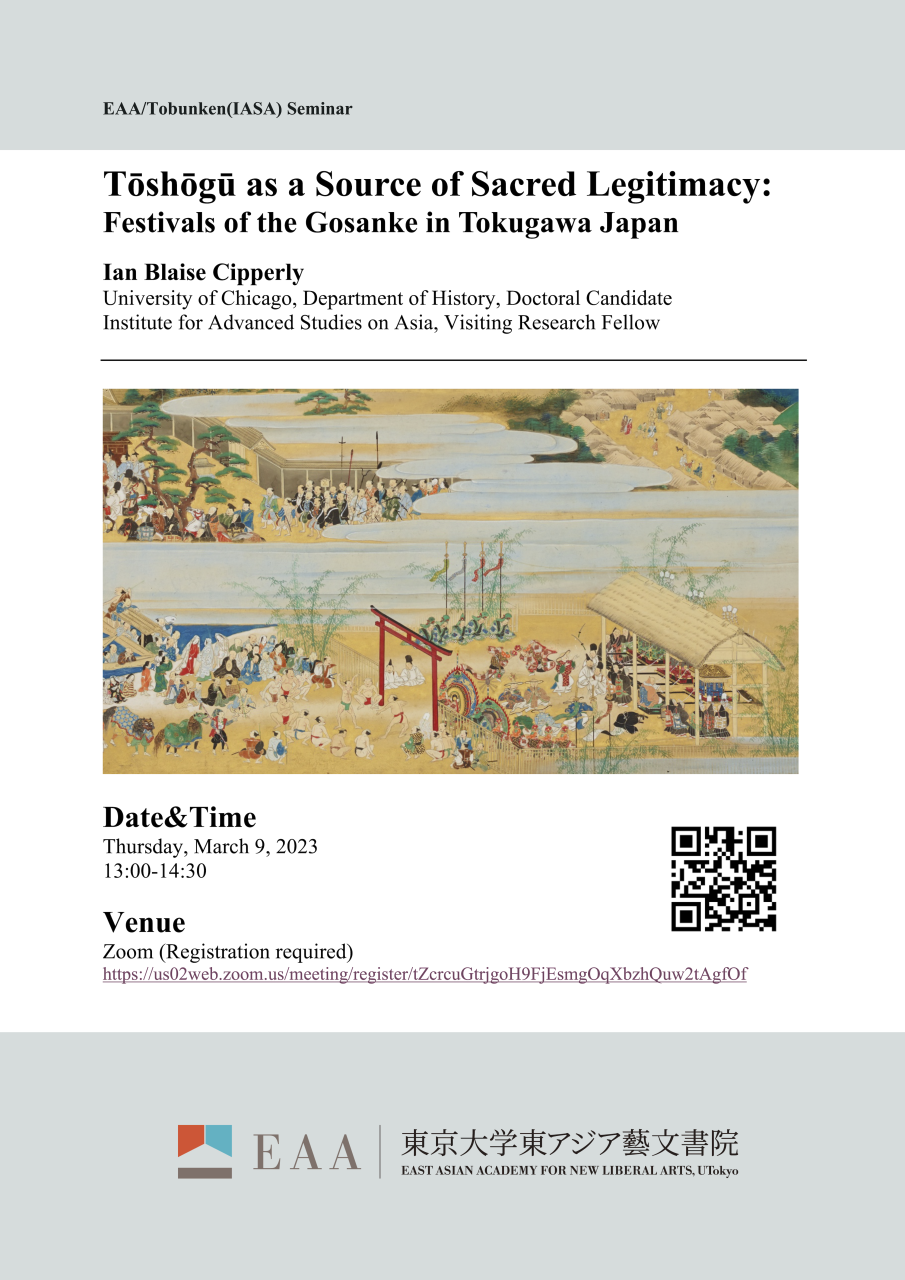■Date&Time
Thursday, March 9, 2023
13:00-14:30
■Venue
Zoom (Registration Required)
https://us02web.zoom.us/meeting/register/tZcrcuGtrjgoH9FjEsmgOqXbzhQuw2tAgfOf
■Speaker
Ian Blaise Cipperly
University of Chicago, Department of History, Doctoral Candidate
Institute for Advanced Studies on Asia, Visiting Research Fellow
■Abstract
The Tōshōgū shrines, which venerate the deified founder of the Tokugawa clan, were a physical manifestation of early bakufu ideology. This talk explores the use of hegemonic deification and how the Tokugawa adoption of this practice was a reactionary response to the spreading popularity of Yoshida Shinto practices—practices which threatened to challenge Tokugawa power by providing a novel source of authority. Furthermore, although the mention of Tōshōgū generally invokes the central shrine in Nikkō, the Tōshōgū shrines existed in a widespread network numbering in the hundreds. Among these sacred sites, the shrines of the collateral Tokugawa houses have particularly rich cultural legacies and boasted some of the largest festivals in the Edo period (1603-1868). The branch houses of the Tokugawa clan coopted the authority of their deified founder in order to raise their own stations within their respective realms. Drawing from illustrated scrolls, this presentation will culminate with an examination of the different ways in which religious festivals developed within the three great branch domains, where local custom, resources, and ideologies shaped the liminal spaces of festival.

——從丸山真男「忠誠與反叛」談起








